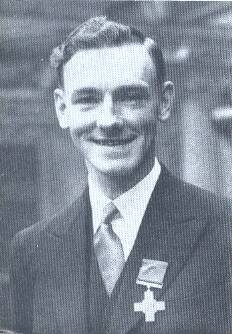Bywater, Richard Arthur Samuel
- Date of birth:
- November 3rd, 1913 (Birmingham, United Kingdom)
- Date of death:
- April 6th, 2015 (Australia)
- Nationality:
- British
Biography
He was the only civilian to be awarded both the GC and GM.
Do you have more information about this person? Inform us!
- Period:
- Second World War (1939-1945)
- Rank:
- Factory Developement Officer
- Unit:
- ROF Kirkby, Ministry of Supply, British Government
- Awarded on:
- September 26th, 1944
- Period:
- Second World War (1939-1945)
- Rank:
- Factory Developement Officer
- Unit:
- ROF Kirkby, Ministry of Supply, British Government
- Awarded on:
- September 18th, 1945
"A few months after his exploits for which he was awarded the GC, Arthur was involved in another explosion in the same factory. This occurred during the filling of ammunition, the initial blast was followed by others which put out all the lights. The only illumination at the site was provided by the numerous fires. Once the fires had been extinguished and the salvage work was finished a team was needed to clear the wrecked building. Arthur and three colleagues volunteered. The ammunition which had caused the accident consisted of anti-personnel, anti-disturbance and time-delay bombs which were scattered through and beneath the debris and were in danger of detonating without warning. The movement of wreckage posed a constant hazard because ignorance or a moment of carelessness by any member of the team could endanger the lives of the others, but the clearance operations were completed without casualties."





